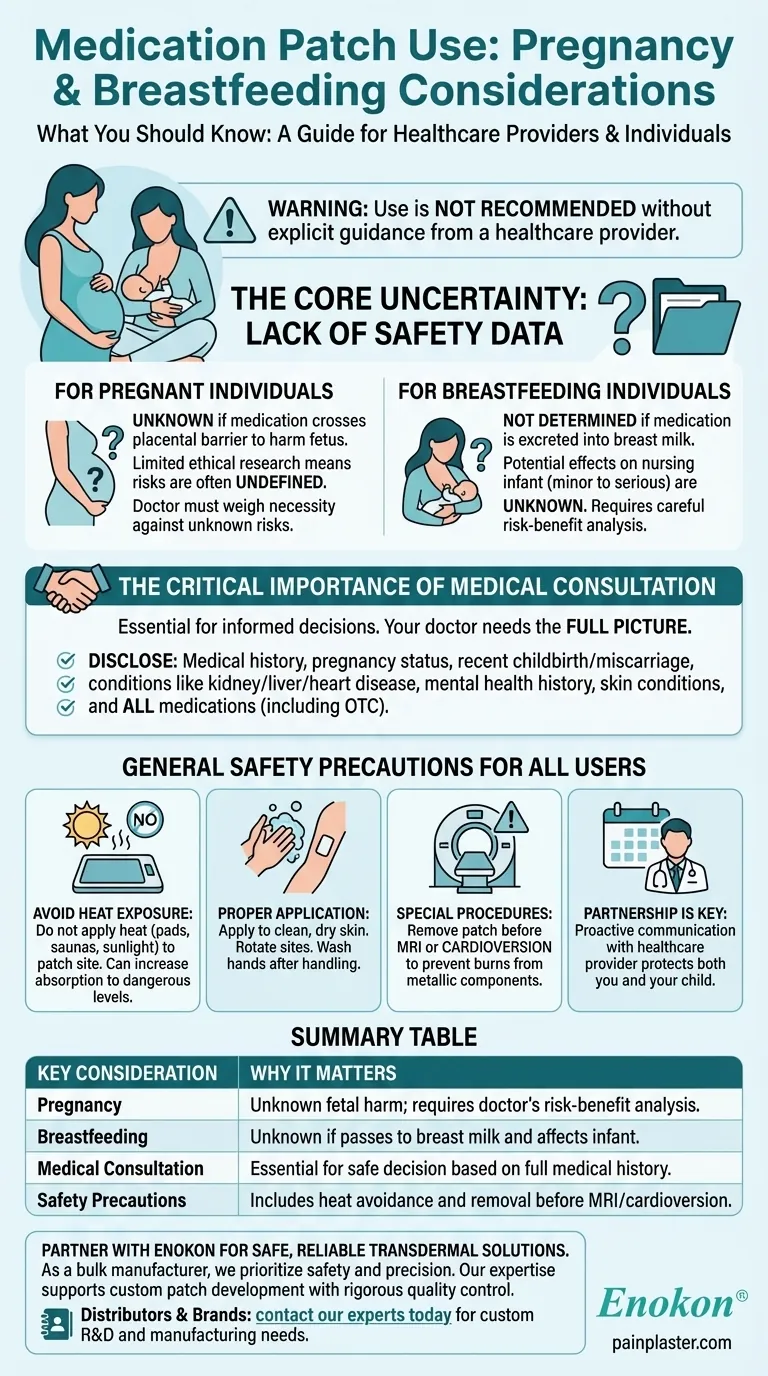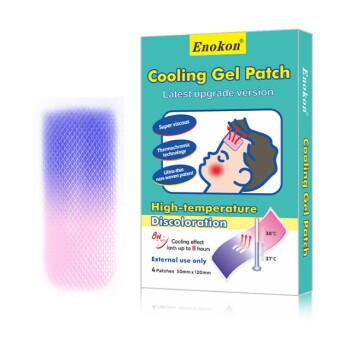For individuals who are pregnant, planning a pregnancy, or breastfeeding, the use of a medication patch is not recommended without explicit guidance from a healthcare provider. The fundamental reason is that it is unknown if the medication can harm a developing fetus or pass into breast milk and affect a nursing infant.
The core issue is a lack of safety data. Without clear evidence of its effects during pregnancy or lactation, the default medical principle is to assume risk and avoid use unless a doctor determines the benefits clearly outweigh the potential dangers.

The Core Uncertainty: A Lack of Safety Data
The primary concern surrounding patch use in these situations is not a known danger, but a significant unknown. Medical guidance prioritizes the safety of the fetus and infant, which means avoiding medications without a proven trackrecord of safety.
For Pregnant Individuals
It is currently unknown if the active medication in the patch can cross the placental barrier and cause harm to a developing fetus. Because ethical research on pregnant individuals is limited, this information is often unavailable for many medications.
Your doctor must weigh the necessity of the medication for your health against this unknown risk to your unborn child.
For Breastfeeding Individuals
Similarly, it has not been determined if the medication is excreted into breast milk. If it is, the potential effects on a nursing infant—from minor side effects to more serious issues—are not understood.
This uncertainty necessitates a careful risk-benefit analysis with your healthcare provider.
The Critical Importance of Medical Consultation
A conversation with your doctor is not a formality; it is an essential step to ensure safety. To make an informed decision, your provider needs a complete and transparent view of your health.
Why Your Doctor Needs the Full Picture
Your pregnancy or breastfeeding status exists within the larger context of your overall health. Conditions like diabetes, high cholesterol, heart disease, or a history of depression can influence which treatments are safe for you.
Key Information to Disclose
When you speak with your doctor, be prepared to discuss your entire medical history, including:
- Any recent childbirth, miscarriage, or abortion.
- Pre-existing conditions like kidney, liver, or heart disease.
- Any history of mental health issues, such as depression.
- Other skin conditions like eczema or psoriasis, which could affect patch application.
- A full list of all other medications you are taking, including over-the-counter products.
General Safety Precautions for All Patch Users
If, after a thorough consultation, your doctor decides that using the patch is the best course of action, it is vital to follow all general safety protocols to prevent accidental overdose or adverse effects.
Avoiding Heat Exposure
Do not expose the patch application site to direct heat sources. This includes heating pads, electric blankets, saunas, hot tubs, or prolonged direct sunlight.
Heat can increase the rate at which the medication is absorbed into your bloodstream, potentially leading to a dangerously high dose.
Proper Application and Handling
Always apply the patch to clean, dry, and intact skin, and alternate application sites to prevent irritation. Wash your hands thoroughly after handling the patch to avoid transferring medication to your eyes or mouth.
Special Medical Procedures
The patch must be removed before undergoing certain medical procedures. Inform your doctor or technician if you are scheduled for an MRI or cardioversion, as the metallic components in some patches can cause serious skin burns.
Making the Right Choice for Your Goal
Navigating medication choices during pregnancy and breastfeeding requires caution and clear communication with your healthcare team.
- If you are planning a pregnancy: Discuss your current medications with your doctor now to create a safe treatment plan before you conceive.
- If you are currently pregnant: Do not use the patch without consulting your doctor to weigh the unknown risks against the benefits for your specific health situation.
- If you are currently breastfeeding: You must speak with your provider to understand the potential for the medication to affect your infant through your breast milk.
Your proactive partnership with your healthcare provider is the most effective tool for protecting both your health and the health of your child.
Summary Table:
| Key Consideration | Why It Matters |
|---|---|
| Pregnancy | Unknown if medication harms the fetus; requires a doctor's risk-benefit analysis. |
| Breastfeeding | Unknown if medication passes into breast milk and affects the infant. |
| Medical Consultation | Essential for a safe decision based on your full medical history. |
| Safety Precautions | Includes avoiding heat exposure and informing doctors before MRI/cardioversion. |
Partner with Enokon for Safe, Reliable Transdermal Solutions
As a bulk manufacturer of high-quality transdermal patches and pain plasters, Enokon understands the critical importance of safety and precision in medication delivery. Our technical expertise supports healthcare and pharmaceutical brands in developing custom patches with rigorous quality control.
If you are a distributor or brand looking for a trusted partner to develop reliable transdermal products for sensitive patient populations, contact our experts today to discuss your custom R&D and manufacturing needs.
Visual Guide

Related Products
- Herbal Eye Protection Patch Eye Patch
- Natural Herbal Wormwood Patch Pain Plaster
- Prostate Pain Kidney Health Care Patch for Men
- Menthol Gel Pain Relief Patch
- Icy Hot Menthol Medicine Pain Relief Patch
People Also Ask
- How do eye patches enhance the effectiveness of eye creams? Boost Your Eye Care Routine
- How can using eye patches contribute to a self-care skincare routine? Boost Hydration & Relaxation
- What are the steps for applying under-eye patches? Boost Your Eye Care Routine
- Can under eye patches smooth fine lines and wrinkles? Hydrate & Plump for Youthful Skin
- How quickly can you see results from using under eye patches? Instant Brightening & Long-Term Benefits

















